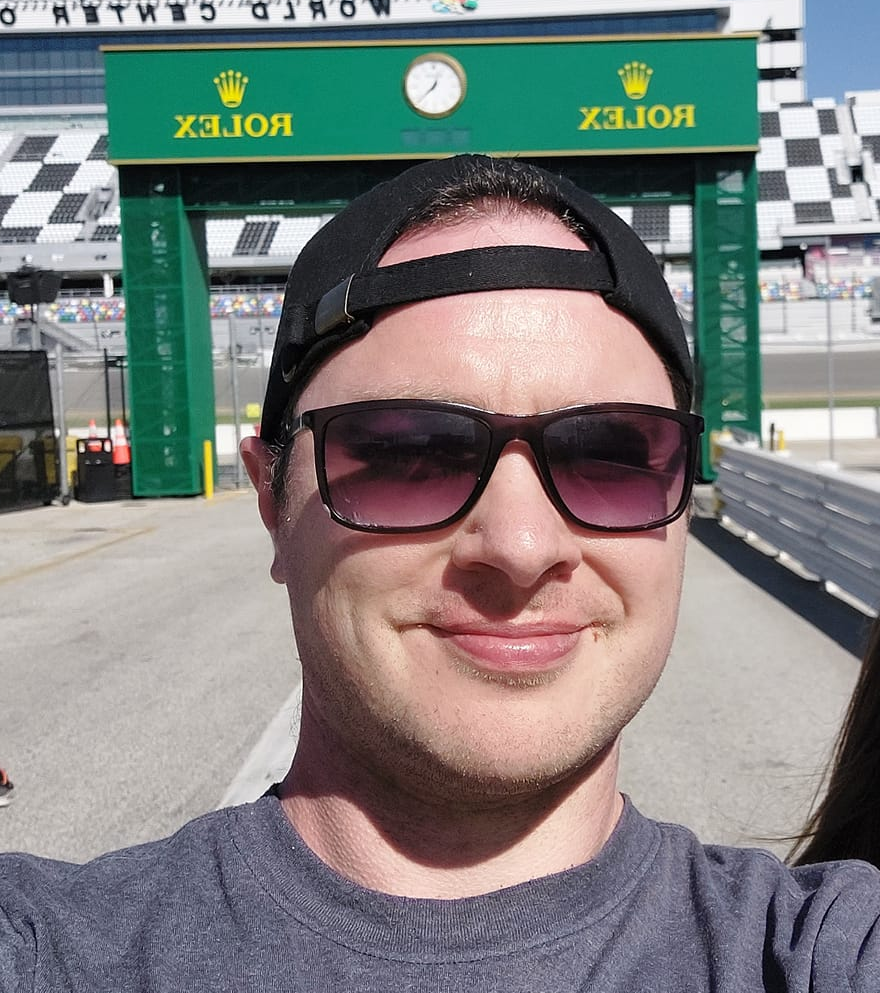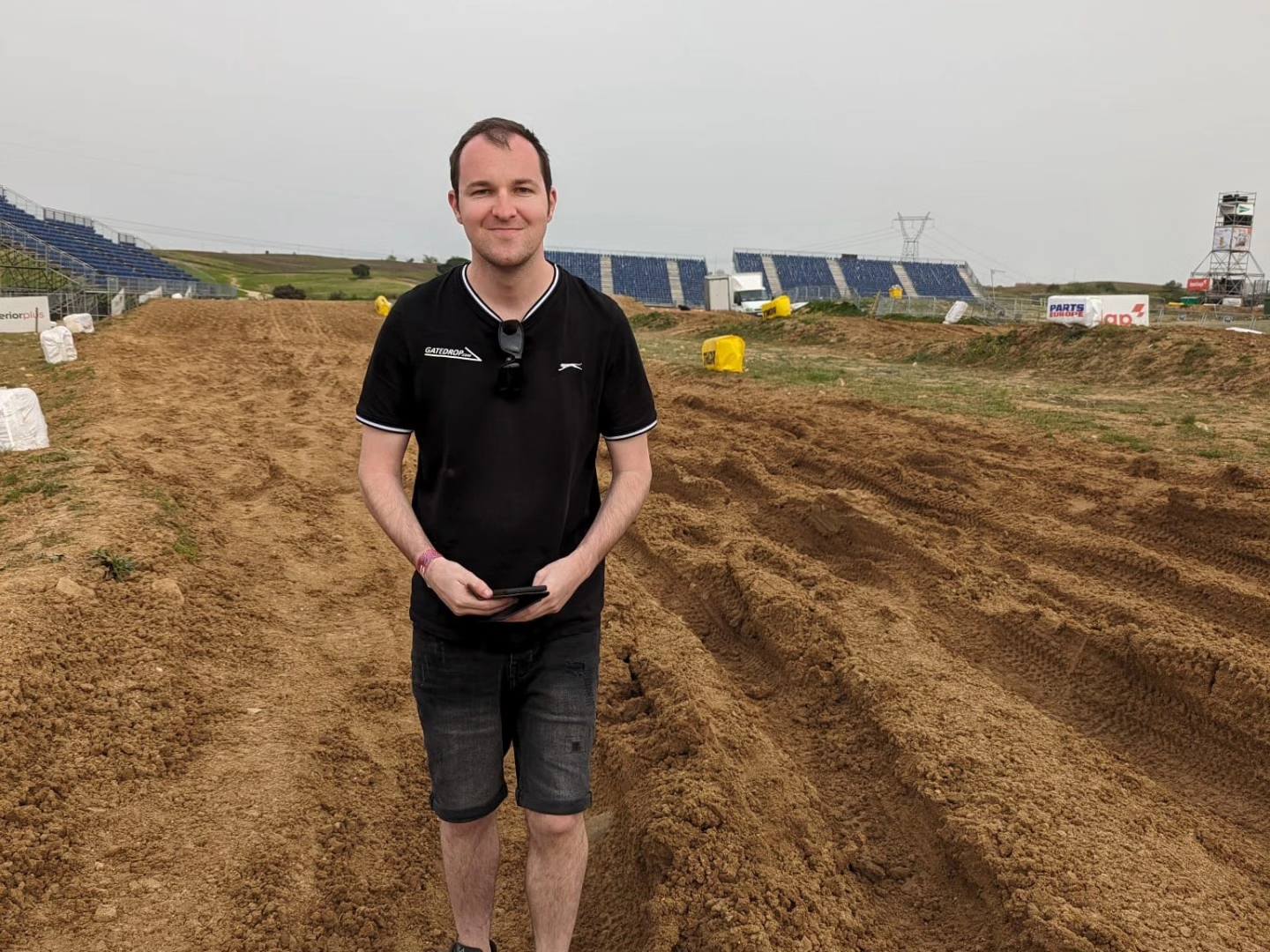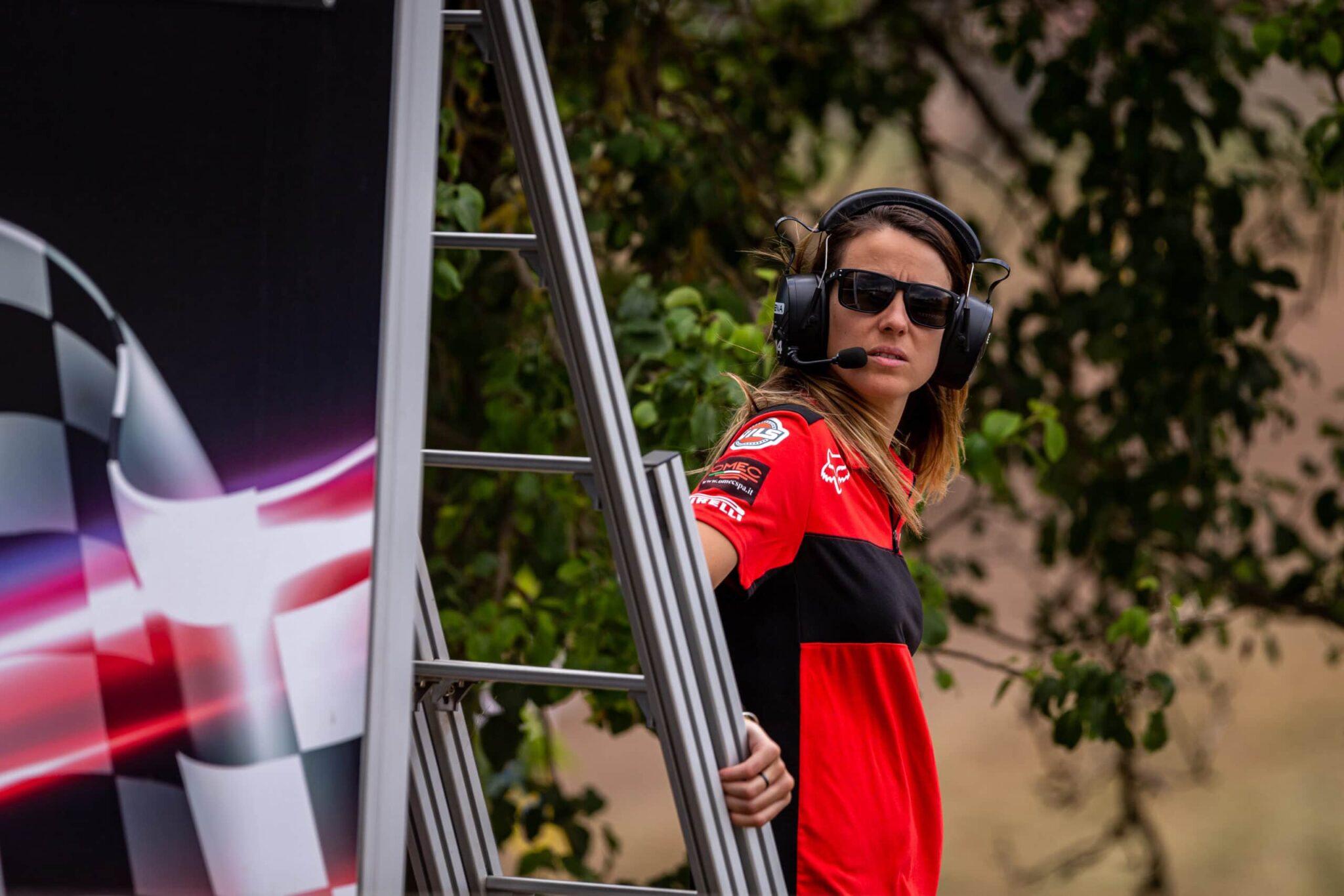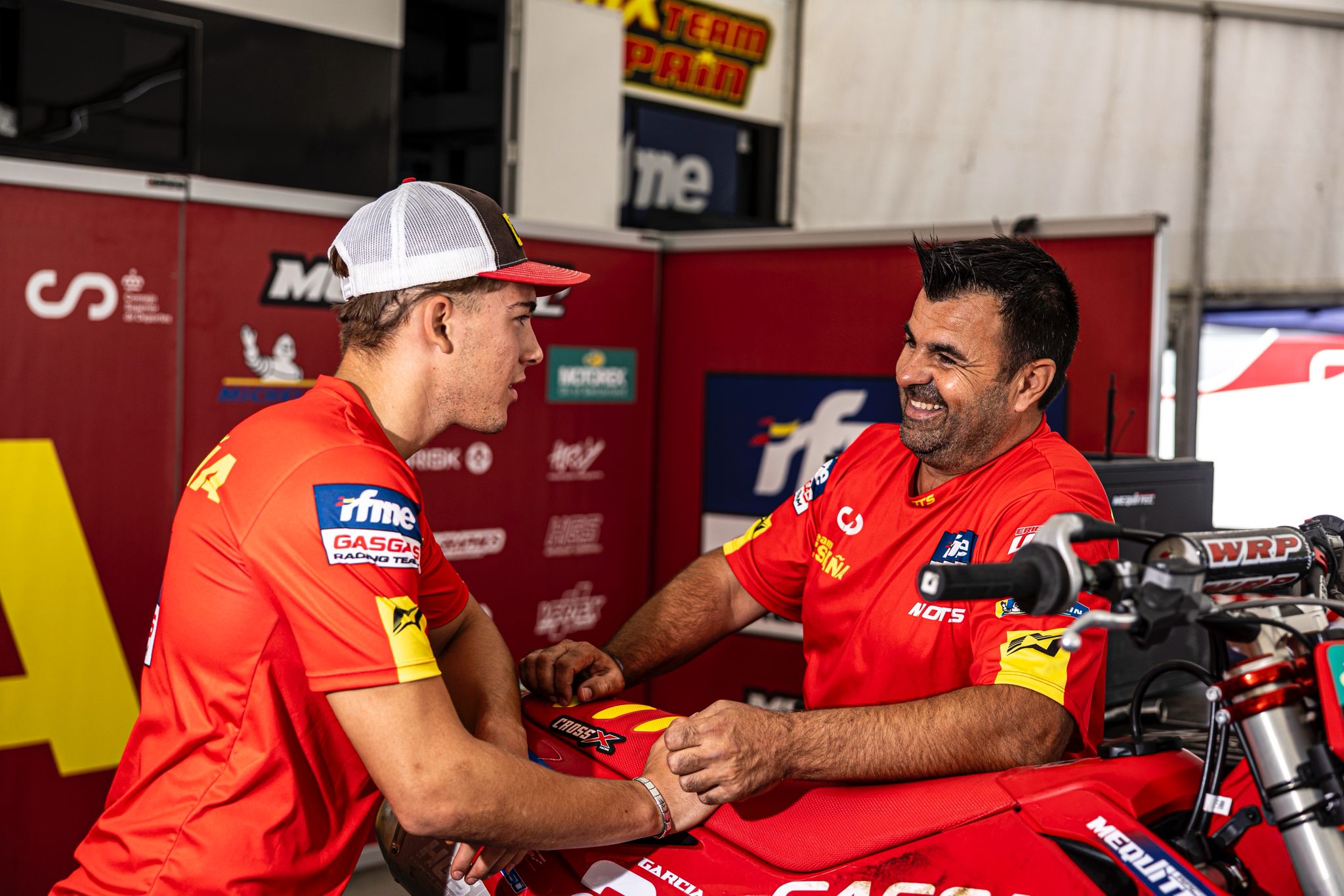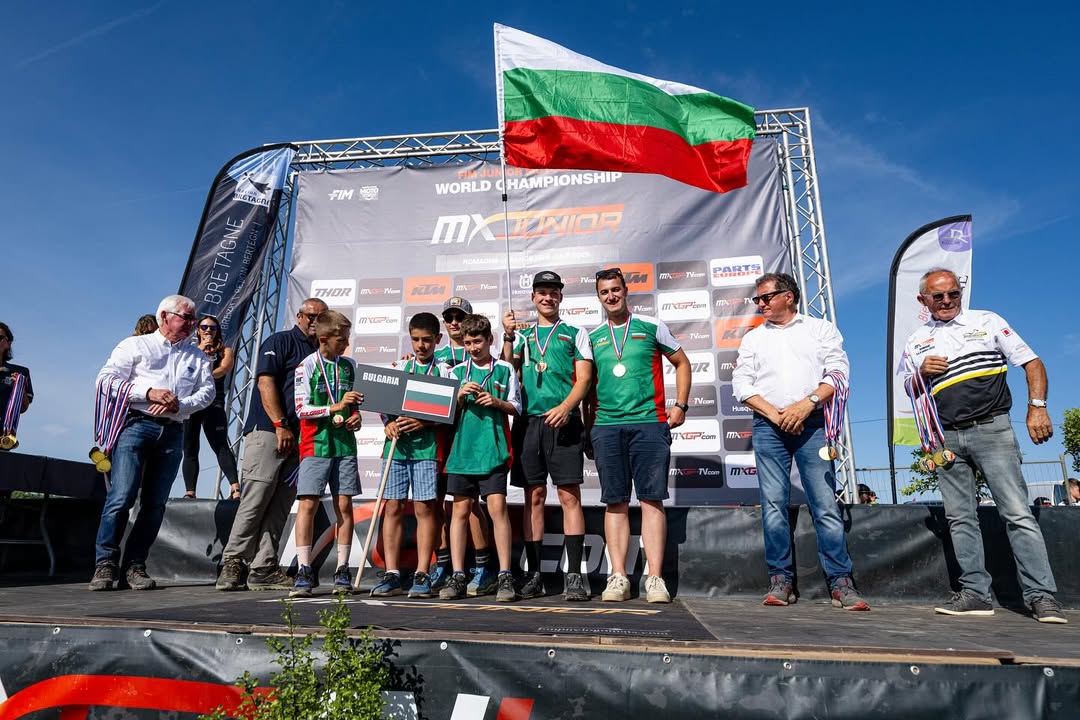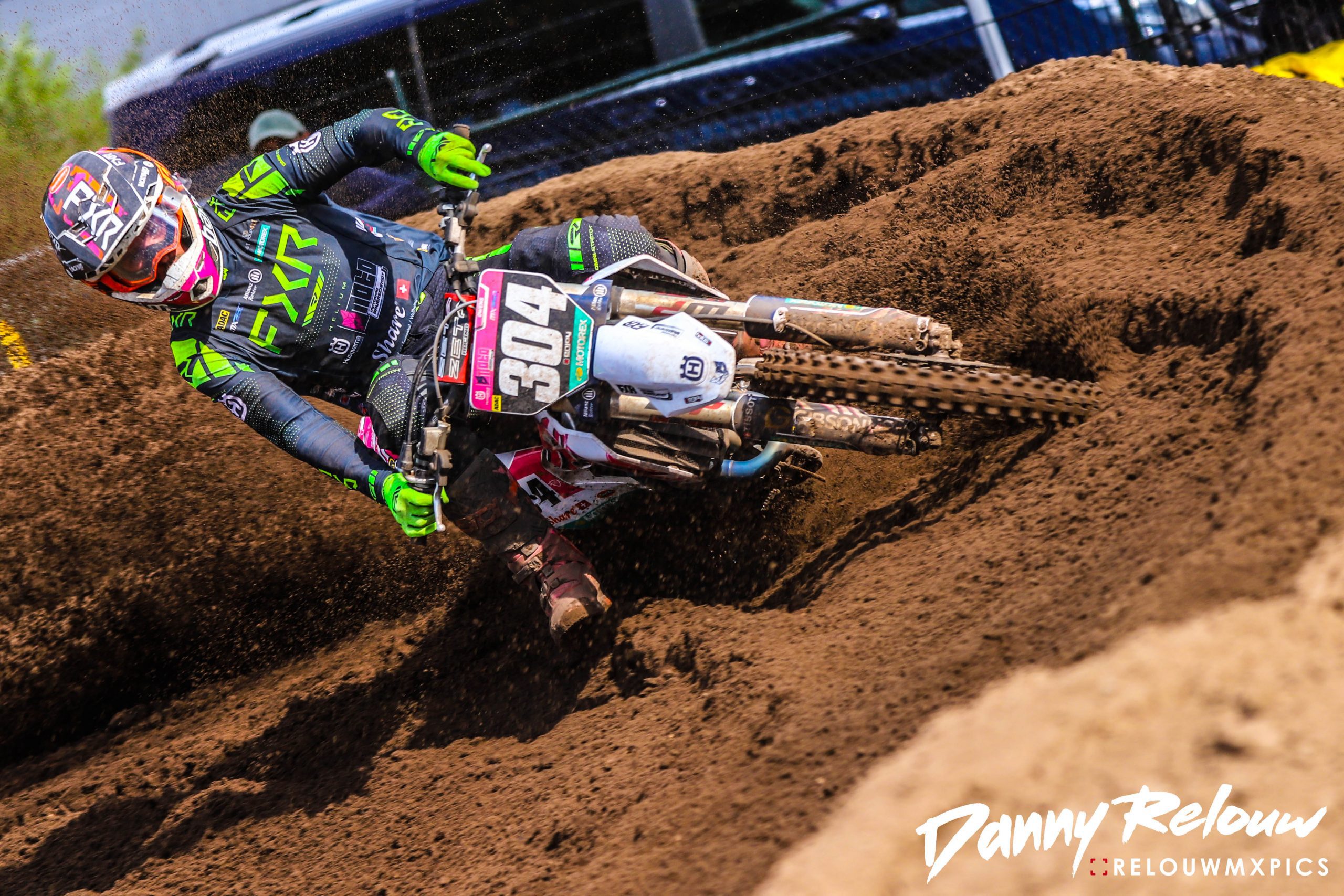Accomplished rider and respected team manager, Livia Lancelot left the racing world at the end of 2022 after a farewell appearance in the World Supercross. What does she remember from her 2018 season with Hunter Lawrence? What are her thoughts on the World Championship and the French series? What was her experience with anti-doping controls in Motocross? Kevin Frelaud had the questions, Livia had the answers. Opinions, truths, memories, behind the scenes. The story of a fulfilled woman; one eye on the past, the other on the future. A second chapter following the first feature.
Livia, you told us that during the year with Hunter, you didn’t have factory support and just a parts budget. I guess you couldn’t really hope to build him a crazy-fast 250 CR-F with that, could you?
Lancelot: That’s right. We had very little budget. We only had a tiny operating budget, so we couldn’t afford to buy amazing engines. Hunter had already signed with Geico, and he struggled to understand why Geico weren’t helping us. They did sell us some parts, but at full price… it was very difficult.
At the start, Hunter complained – like 99% of riders – about the bike’s power, he wanted upgrades on all sorts of things, but overall, they were still understanding. With his father, they knew very well that we were doing the maximum for them. We weren’t the official team, we weren’t a team capable of fighting for the world title.
Originally, when discussions started with Giacomo, the plan was to race the EMX250 in 2018! So, we had the budget for Europe. It was just a chain of circumstances; one thing led to another. The fact that it was Gariboldi, that I already had a name in the paddock and experience as a rider, but also a bit as a manager. At the time there was a shortage of Honda teams in GPs, they were struggling to find a team they could trust… That’s how we ended up with two riders in MX2 when we were initially supposed to do the European series. On top of that, Hunter had just had an incredible Nations: he was left without a ride for 2018. Everything came from Giacomo’s gamble, an opportunity that appeared. Suddenly, we found ourselves potentially able to fight for World Championship podiums.
So in the end, Hunter was the rider you should have had in your team a few years later?
Lancelot: Exactly. We should have had him two years later, in 2020, when we had more experience. In itself, the operating budget doesn’t change. But the initial investment is huge in the first year, because you have absolutely nothing: you have to buy everything. And those expenses, that part of the budget you lose, it inevitably holds you back. Honestly, Hunter would have been better to sign two years later with us.
You had two riders at 114 — Hunter and Bas Vaessen. Two riders with different levels and ambitions. I imagine Hunter had to take up a bit more “space”?
Lancelot: Yes, of course. That’s something you have to learn to manage, there’s the human side. You need to explain it to the riders, but also to the mechanics. Because the mechanics don’t necessarily have the same instructions depending on the rider, depending on the budget.
When you sign a Hunter Lawrence or a Mitch Evans who are getting podiums, and the second rider is struggling to score points, the instructions are not the same. Even just in terms of sponsors, the demands are not the same. It’s up to you to manage all of that internally. You have to explain how things will work, if there will be differences in equipment. We always tried to treat everyone equally.
That year with Hunter, Geico sent us camshafts. Not fifty of them, just one pair. Basically, we put them on Hunter’s race bike, and he didn’t even have them on his practice bike even though he wanted them. Obviously, the second rider didn’t get anything. Sometimes, you have no choice. Most of the time, riders are smart enough to understand that if one rider is getting podiums and the other is finishing 20th, the equipment won’t be the same. In a way, it’s “almost normal,” even if it’s always hard to swallow. But aside from that, we never made differences with wear parts between our two riders.
Another example: when Fox showed up at the truck, there weren’t always the same number of clothes for both riders. That doesn’t only depend on the team and the manager, it also depends on the partners. It’s defined by your market value, in a sense.
With us, Hunter had a personal deal with Monster. So, they would come by from time to time to give him gifts: a new helmet, a new gadget, something else. As a team, you can’t compete with that. Your second rider is there, he sees all of this, and he gets nothing.
Do you think that today, in a factory team, a Gajser and a Fernandez find themselves in the same kind of situation?
Lancelot: No, because in a factory team, you don’t have equipment issues. Normally, everyone gets the same. But like in any motorsport, you always have a number one rider and a number two rider. So, there will always be one who has more influence than the other. That happens in Formula 1, in MotoGP, in Motocross. Everyone knows very well that at Red Bull, the car is set up for Verstappen; the second driver just has to deal with it. They have the same equipment, but it’s the equipment Verstappen chose.
Then of course, some teams manage this better than others, there’s sometimes more of a human touch. In the off-season too, the number one rider will often have “priority” when it comes to choosing preparation races. We’re talking about riders like Gajser, Herlings, the Coenens today. These are riders who have influence within a team. If the number one rider wants to go to Hawkstone instead of racing the Internazionali d’Italia, generally, the number two rider has to follow.
That’s part of the hierarchy. At the top, there’s the rider who is capable of fighting for a world title. Usually, the number two rider is a bit younger. If he does the job properly, he’ll become the number one rider in his team a few years later.
We sent some questions to David Luongo. I don’t know if he’ll reply. I asked him how kids aged 13 to 17 are supposed to keep up with school while racing 12 rounds of the EMX125 across Europe. A few years ago, it was 8, and that was already a lot. In the end, aren’t we asking them to choose between school and sport, chasing a dream that maybe one rider in 500 will ever actually achieve?
Lancelot: Absolutely. For sure, today you become a professional rider very young. We’re talking about the EMX125, but the top riders today entered GPs very, very early. Roczen, Herlings, Gajser, Coenen… Even without talking about the 125, at World Championship level, they arrive very young. The reality is that unfortunately, at some point you have to make a choice, take a risk. It’s a choice I also had to make in my time.
Like you said, when only one in 500 riders make it, the choice is a tough one. But I don’t think you can expect David Luongo to run things based on that. In every professional sport today, athletes are reaching the top level younger and younger. The key is making the right choices. As a parent, you need strong shoulders. I think twelve rounds is a lot, especially since two or three of them are really far away. For the EMX250 it’s a bit different, because the riders are already mostly in teams. In EMX125, you still have a lot of privateers.
And today, we talk about the kids not going to school, but what about the parents who can’t go to work anymore? An EMX125 season costs you an arm and a leg, and on top of that you can’t even work because twelve times a year you’re leaving Wednesday and coming back Tuesday after driving all night in the family truck… I think there’s reason to reconsider the EMX125 format.
Afterwards, everyone has their own view. I could also say that the EMX250 has become too much of a rival to the MX2 World Championship, and the MX2 gate isn’t even full. Couldn’t we look at that again too?
There’s also this trend over the last ten years of putting all the classes on the same weekend; it’s become a bit of a mess. Track conditions for the European classes aren’t great: they ride Sunday morning on a track that’s been heavily watered overnight. Same for WMX. I think many passionate motocross people who’ve raced themselves think, “I wouldn’t do it this way.” But it’s not that simple, and it’s not up to us. It’s Infront.

I tried to work on a story about anti-doping controls last year; it wasn’t easy. So, I decided to talk about it more with riders and industry members. I’d like to know your point of view as a former rider and team manager. Do you think in this sport doping and anti-doping controls are things we should pay more attention to? In many sports where millions are at stake, doping scandals have been around since the dawn of time.
Lancelot: I do think there aren’t as many controls as in other sports. That’s for sure. I was tested quite a few times, but honestly, I couldn’t tell you exactly how many.
I was tested after plenty of GPs. I was also monitored for two years through the ADAMS system, which was called WADA at the time, or something like that. It’s the app where you have to submit your daily whereabouts so they can show up and test you unannounced. I was tested five or six times a year each of those years. So yes, there are tests. Are there enough? I don’t know. Would someone benefit from no riders ever testing positive? I don’t know. I can’t guarantee 100% that doping exists, I’ve never seen it. But I do think we’re in one of the most physically demanding sports in the world.
Doping works for a lot of things. For preparation, fitness, recovery, for example. Like you said, with the money at stake, it’s possible doping is a reality. It’s strange that nobody has ever been caught.
As a team manager, we had contracts – for example with Honda – that said the rider couldn’t dope, and if he tested positive, his contract would be cancelled, he’d have to pay back X times the value of the deal, etc. Those are standard clauses that every manufacturer includes. The factories don’t want to be involved in that. All my riders signed that type of clause, but we weren’t checking what they took or what they drank from their bottles. That’s not really our role as team managers.
It’s true that with the women, in my time, we sometimes had doubts. I remember thinking “Wait, that’s not normal.” They’d take us for testing after the race in GPs, but the list was already made up at the start of the weekend, so it was possible to know who was going to be tested, and I don’t think that was normal. Sometimes you wonder if someone was protecting a rider. I’m not saying the other girls were doped, far from it, but at the top level you always have reasons to question things. Sometimes I thought, “It’s always the same riders being tested.” I was tested countless times.
Right now, everyone suspects Pogacar, and we’ll probably get the truth in twenty years. In motocross, I don’t think anyone is really looking too deeply. I also think there are ways to push things to the limit without being officially “doped.” You can max out your levels right up to the legal limit. That happens in other sports, and I’m sure it happens in motocross too. How, with what, and for what purpose? I have no idea.
As you said, the last time we heard anything was Josh Coppins in 2002. In a sport like ours, I find that pretty surprising.
Right now, people are talking about the transfers of Jeffrey of Tim… In reality, aside from trading riders between teams, I don’t see much evolution. Gajser in red, blue, or orange will make nice articles, nice photos, but he’s still Tim Gajser. There are 17 factory seats in MXGP, now mostly occupied by riders in their thirties. Luckily Lucas stepped up, otherwise I’d say we’re really struggling to see the next generation come through.
Lancelot: To be honest, I don’t watch every GP. In fact, I watch very few. I mostly watch highlights, the results. But compared to when I was a manager – say five years ago – I feel like nothing has changed. I was at Ernée this year: same riders, same story.
Like you said: they’ve changed numbers, some changed colour, or gear brands, but it’s still pretty much the same. I think the new generation is struggling to push the older ones aside. The very best riders go to the USA, and that doesn’t help renew the field in Europe. If you look at the results in the USA, there are almost more non-Americans than Americans at the front these days. I think that has an impact. And the Coenen brothers – it’s only a matter of time before they join Prado in the U.S., and I think others will follow.
You work with the federation, so it’s up to you to preach for your own parish [laughs]. The trend is that our French riders are leaving, and foreigners aren’t rushing to come race here. How do you explain that?
Lancelot: I think there are a lot of internal things that are hard to understand. A bit like what we said earlier with Infront and the EMX125 series.
Today, why are so many French riders leaving, just like the GP riders go to the USA? It’s money, that’s the bottom line. Yes, when you look at French championship prize money, it’s not that it doesn’t make you dream, it’s that it doesn’t even cover your costs. So I think that’s where the problem lies. Motocross is a very expensive sport and, in terms of prize money, you can’t cover your costs unless you also have outside sponsors. Today, the motorcycle industry sponsors don’t necessarily put enough money on the table for riders to live off.
Let’s talk about the French Championship today, assuming you’re “Mr. Average Guy.” You buy your bikes, you train, you go to all the Elite rounds. Just with that, you need a huge operating budget if you want to do things properly and have a mechanic. A rider doing the Elite who goes to wash his bike himself at the carwash after the race… normally, that doesn’t exist. If you don’t have a motivated dad to wash your bike when you’re nearly 30, and you pay a mechanic for the year, you can’t race the Elite, because French dealerships and French gear companies can’t provide the financial backing.
No French rider can afford a full season without racing abroad. Riders go looking for races with prize money, like that famous Indian championship we talked about earlier, etc. I’m not convinced that racing a Supercross in India is better than one in France. The difference is simply the money being put on the table.
We really have to realize that, say, in five years, we might have a problem. In France, we’re fairly secure for now: we have Romain Febvre, Maxime Renaux, Thibault Benistant, Mathis Valin… Except, the day Romain steps away, if Mathis takes time to find his place and if Thibault doesn’t make a good move up to MXGP, things could get complicated. When I look at the Elite series, I see the MX2 champion is Boisramé, who left the world championship. Second place is a Spaniard, third is an Australian. The MX1 champion is Norwegian, the runner-up must be Maxime Desprey, who’s over 30… So what do we do?
Lancelot: I agree with you, but does the federation really have the power to do anything about it? Also, the French Elite championship isn’t necessarily seen today as a stepping stone towards the Grands Prix.
We still have a lot of good riders though. France still won at Romagné, France is still world champion as a team. Mano Faure won in 125cc, Rafael Mennillo in 85cc, and we weren’t far off in 65cc either. You can see that at youth level, we’re still holding up. Maybe a bit less than a few years ago, but hasn’t the number of participants dropped in recent years too?
Isn’t motorsport as a whole losing momentum as well? I think a lot of blame is being put on the federation, but is the federation 100% responsible for all this? People say riders aren’t paid in the French championship, yes, but I don’t see many major partners stepping up to invest in the series to pay the riders.
Couldn’t a promoter step in, take charge of the Elite, manage it a bit better, go out and find partners? But then, we also have another issue: we’re in France. I’ve experienced it myself as a team manager compared to our neighbours: in France, it’s much harder to find non-sport sponsors, because our tax system is really complicated. That, for example, the federation can’t do anything about. I know that in Belgium and Holland, they have far lower employment charges. There are lots of little details like that which make a difference.
Yes, you can always bash the federation. You can always say: “They should do this like that.” Sure, today there aren’t enough bonuses in the Elite, that’s obvious. We’re still talking about a French championship with mostly professional riders. Those at the front have to be professionals, they have to ride all week. They don’t go to work during the week and then come and win races at the weekend, that doesn’t exist. So yes, there should be more bonuses, but I don’t think it’s only the federation that’s responsible for that. Like I said, among all those complaining about the lack of bonuses, I don’t see many companies saying: “We’d like to deduct taxes, so we’ll give money to the French Elite championship.”
I think they’re aware too that, since they’re at the top of the pyramid, they’re the ones everyone turns to when it’s time to hold someone accountable, so to speak.
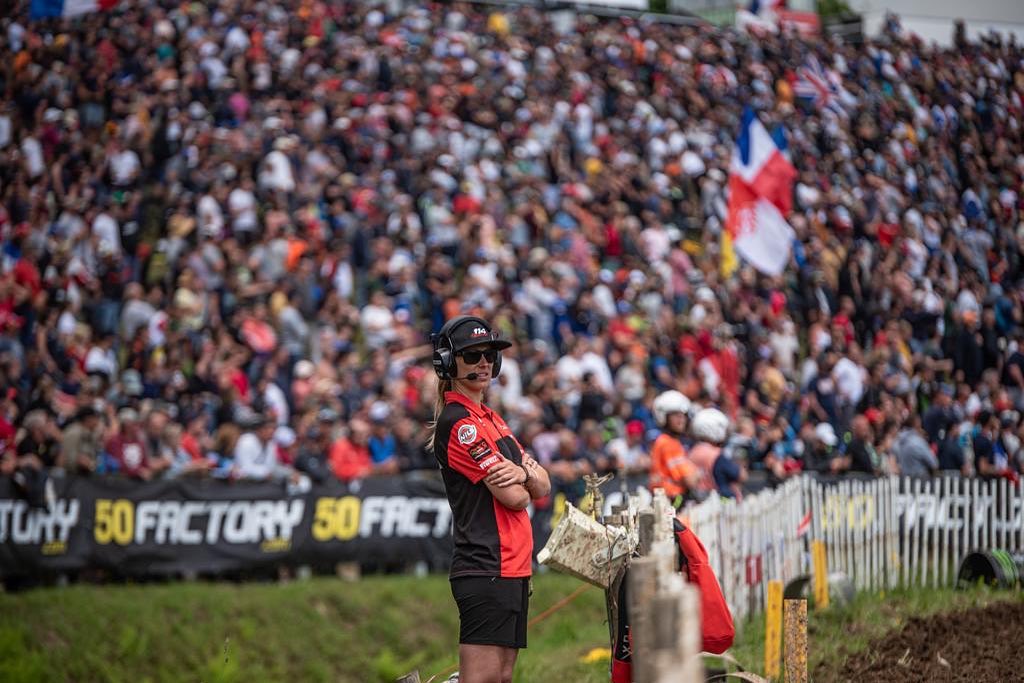
A word on the impact of social media. I think you were part of the generation that experienced both with it and without it. The era when it didn’t exist, and then when it became a must-have. What kind of impact would you say it has on a rider’s career today? As much as it can really help you blow up, build an image, become known, it can also work against you, right?
Lancelot: Honestly, today it’s super complicated because, as you say, it can go either way. It can help you, but it can also hurt you.
In the motocross world, we’re still quite lucky because, generally speaking, people are respectful. Sure, there will always be some guy hidden behind his computer writing stupid comments on certain posts, but overall, it’s okay.
It’s double-edged: it can help you or it can harm you. It can help because we see riders who do better on social media than in terms of results and who, in the end, get more sponsors and earn more money than others with stronger résumés. Conversely, you can see very good riders who don’t use social media.
I don’t think it’s an exact science, really. I think you have to find what suits you best and learn to manage it. And I don’t think it’s easy for the younger generations either. Clearly today, there’s a real issue of learning how to deal with it all. It’s complicated. When you see what goes on in groups created by kids — even outside of motocross — just kids and social media: it’s a potential source of stress. For a young athlete, I think you need to use it, but it’s important to delegate this role.
At first, it’s usually someone in your family or a friend who manages it. My Instagram was always managed by others. Haudiquert took care of all my posts, whether on Facebook or Instagram. My best friend kept an eye on messages and comments, and sometimes deleted things when necessary. So yes, I think it’s important to have someone else manage it and to be able to stay a little detached from it all.
Recently, I was watching a documentary on Tom Vialle, and I was surprised when at one point someone pointed out that — despite all the comments on his posts saying he should win — Tom had the strength not to care. I found it almost strange that people would highlight that. We’re talking about Tom Vialle: two-time MX2 world champion, two-time US champion… Of course he doesn’t care about comments from random nobodies on social media! I should hope not. At this point, with his career, he has nothing left to prove to anyone.
With social media, you have to take the positives when they’re there and try to set aside the negatives. It’s not easy.
To finish… What have all these years in motocross and high-level sport given you today in your everyday life as a woman?
Lancelot: Plenty of things. I’d say a certain energy, really. A general energy that pushes me not to give up, to always see the positives too. Because a rider’s career is full of highs and lows, and you have to be able to get back up when things go wrong, keep moving forward and find solutions. If you only dwell on the negatives, you never get back up. So I think it helped me, even in daily life now, not to dwell on a failure, a bad experience, or something I didn’t like. I think I have this ability to stay positive, to move forward, and that’s clearly something motocross gave me. Along with my upbringing, of course, but my upbringing made me into the rider I was, so it’s kind of linked.
What would you like people to remember about you in 20 years?
Lancelot: That’s a good question. I don’t know… Whatever they want? It’s hard to answer, I’ve never thought about it. I feel like saying it doesn’t matter to me. Of course I’d like it to be something positive, but honestly, it doesn’t matter to me.
That’s because you’re part of the older generation, who don’t constantly care about what others think.
Lancelot: Yes, maybe. I can’t say I’d want them to remember my world titles or results I’m proud of, because I don’t think Livia Lancelot is just that. There are also lots of things people don’t know about me, because in the end, they only know the competition side, the rider, the results. Will they remember that I once broke my bike on the sighting lap and lost a world title because of it? Well, at least I’ll remember it [laughs].
When you think back to little Livia discovering motocross, with dreams and ambitions, do you think she would be proud of the woman you’ve become today?
Lancelot: Yes.

